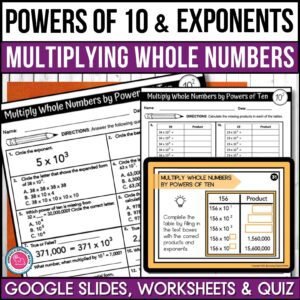What is the Butterfly Method?
Fractions with unlike denominators can be tricky for 4th and 5th graders to understand. Students are moving from something relatively straightforward when adding, subtracting and comparing fractions with like denominators to something requiring more complex calculations.
The butterfly method is a simple, visual way to help students compare, add, and subtract fractions with unlike denominators. In this post, we’ll look at how the method works, its pros and cons, and when it’s best to use it in your classroom.
The butterfly method for fractions gets its name from the visual pattern it creates when you use cross multiplication to add, subtract or compare two fractions with unlike denominators.
I’ve created these steps into a helpful FREE EDITABLE powerpoint presentation for you to use with your students to introduce the butterfly method. Please click here or on the images below to download this from my shop.



Advantages and Disadvantages of the Butterfly Method
The butterfly method can elicit strong opinions on whether it should be used or not in the classroom. I have used it with some students and find that if used intentionally it can be very helpful and build confidence within the classroom especially at the start of the fractions topic. Here are some advantages:
- Simple and Visual:
- The butterfly method provides a clear and structured way to handle fractions, making it easier for visual learners to understand the process.
- Easy to Remember:
- The butterfly-like pattern serves as a mnemonic device, helping students recall the steps for solving fraction problems.
- Promotes Cross-Multiplication Understanding:
- It introduces the concept of cross-multiplication, which is useful for comparing fractions or finding a common denominator.
- Accessible to Beginners:
- The method is straightforward and doesn’t require extensive knowledge of least common multiples (LCM), making it a good starting point for students new to fractions.
- Quick Comparisons:
- It is particularly useful for comparing fractions quickly without needing to fully compute equivalent fractions
However I believe there are disadvantages to consider:
- Lack of Generalization:
- The butterfly method works well for adding, subtracting, and comparing two fractions, but it doesn’t work well for with three or more fractions. It becomes time consuming and has more potential for errors.
- Conceptual Understanding:
- Students can rely on the pattern without fully knowing why it works which can limit their deeper mathematical understanding.
- Doesn’t teach Least Common Multiples
- Not only do students need to learn to add, subtract and compare fractions by converting them into equivalent fractions with a common denominator using the lowest common factor but it’s necessary skill for more advanced math topics.
- Doesn’t Teach Simplification:
- While the butterfly method can give the correct answer, it doesn’t focus on teaching students how to simplify fractions using methods such as the greatest common factors (GCF).
How and When to Use the Butterfly Method
The butterfly can be a helpful tool in a limited way and it’s important to use it as a scaffolding tool rather than a substitute for methods that build a solid understanding of how fractions work. In my classroom I’ve used and presented it in the following ways:
- As a Bridge:
- Clearly explain why the butterfly method works. Relate it to the fundamental concepts of fractions, such as cross-multiplication and equivalent fractions, so students see it as a tool, not magic!
- Introducing Fraction Concepts to Beginners:
- The butterfly method is a helpful starting point and confidence building tool for students who are just beginning to work with fractions. Its visual and structured approach can make fractions feel less intimidating and provide immediate success.
- When Students Struggle with Common Denominators:
- For students who find it challenging to understand least common multiples (LCM), the butterfly method offers a workaround that lets them solve problems and build confidence. To learn more about supporting students with math difficulties, please click here.
- For Visual Learners:
- Students who process information better through visual patterns or images might find the butterfly method a valuable way to grasp fraction concepts initially.
- To Transition to Deeper Methods:
- After students are comfortable with the butterfly method, gradually introduce other methods, like finding the least common multiple, to foster deeper understanding and versatility.
- To help students think About Simplification:
- Ensure students also learn to simplify their answers and understand why simplification is important.
- Combined with Hands-On Learning:
- Use fraction strips, number lines, or visual aids alongside the butterfly method to reinforce the underlying principles.
BEST SELLING RESOURCE
The Comparing Fractions using the Butterfly Method is one of my best-selling products that makes comparing fractions easy and fun. Highly rated by educators from 3rd Grade to 5th Grade, with many sharing reviews about how it helps students understand fractions better.
CLICK HERE OR ON THE IMAGES BELOW TO FIND OUT MORE.



Conclusion
The butterfly method is not just a gimmick; it can be a valuable tool when used appropriately. It’s most effective as a scaffold for beginners and visual learners. However, to ensure students grow into confident and capable mathematicians, educators should move beyond this method to encourage conceptual understanding and versatility in working with fractions.
Other Resources to Support Teaching Fractions
Jumping Elephant Math resources are designed to meet the needs of a variety of learners and aligned with common core standards. Check out my full range of fraction resources here










